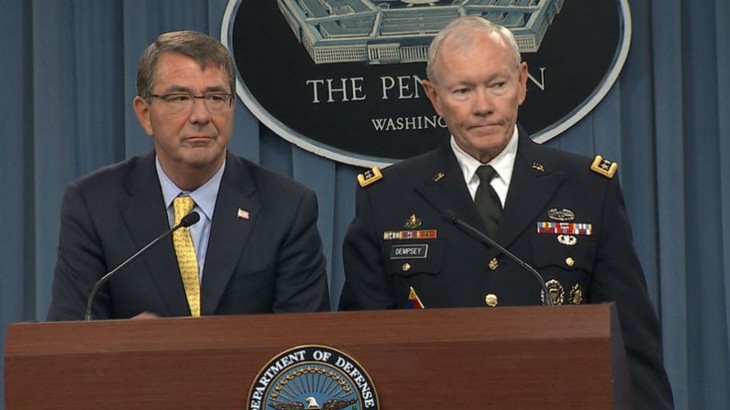(VOVworld) – The US has released its new National Military Strategy for 2015, which has turned its strategic targets to the Pacific and focused on some state adversaries as major threats to the security. The US military is urged to have a stronger influence reflecting the responsibility of a preeminent power in global order and security.

The US 2015 National Military Strategy points to state adversaries, in addition to terrorism and extremism (photo: yahoo.com) |
The US’s National Military Strategy is built every four years on the basis of the National Security Strategy. The 2015 version says that the US military is the best-led and best-equipped force in the world and is committed to defend US citizens. The US military will build a global security network, prevent the proliferation of weapons of mass-destruction, particularly nuclear weapons, welcome the rise of emerging nations, and stand ready to defeat potential enemies. The Strategy points out the challenges of the complicated world situation.
Broadening its role in global security
The Strategy says the United States is the world’s strongest nation, enjoying unique advantages in technology, energy, alliances and partnerships, and demographics, but that these advantages are being challenged.
The new Strategy adopts several changes to meet global developments. In addition to terrorism and extremism, the strategy points to state adversaries, putting Russia and China at the top of the list. It says Russia has violated several agreements, including the Medium-range Ballistic Missile Treaty. The Strategy criticizes China’s recent actions which have increased tensions in the Asia-Pacific. China’s unilateral claim of sovereignty over almost all of the East Sea has violated international law. While the international community calls on China to ease tensions through cooperation, Beijing has responded by stepping up construction and militarization of strategic places in the East Sea.
The US will improve its alliances with NATO, Japan, the Republic of Korea, and Australia to maintain security and peace and turn its attention to Asia by concentrating weapons and resources in this region. The US military will be updated and consolidated to deal with strategic challenges and ensure sufficient capacity and readiness to meet its global responsibilities.
Turning its strategic interest
Previous US military strategies said its concentration was the post-Soviet situation. The 2015 Strategy says it will press forward with a rebalance to the Asia-Pacific region. The military will be tasked to counter surprise attacks, maintain superiority over its enemies, and protect the US, its allies and partners, and nations that are non-allied but have common interests with the US.
At the annual international conference on security in Asia-Pacific, the Pentagon confirmed the US’s determination to build an atmosphere of trust in its relations with regional countries, and help those countries resolve their problems and maintain peace and security in the region.
The US allocates about 600 billion USD for its annual military budget, by far the largest in the world. Facing a rising China, the US aims to have a growing presence in Asia-Pacific. In 2015, the US has increased its military budget and its cooperation with allies to confirm its number 1 position militarily and economically.